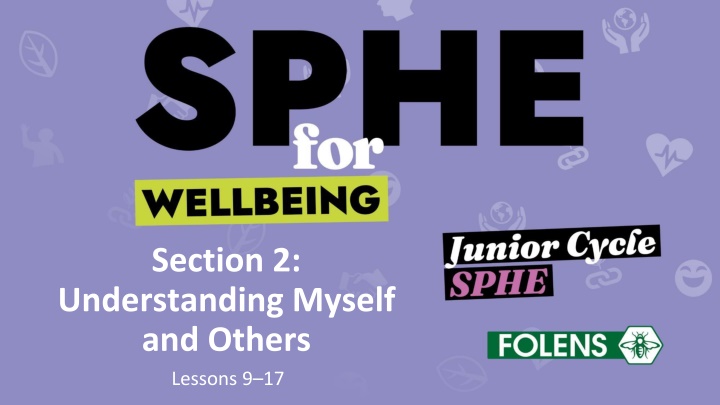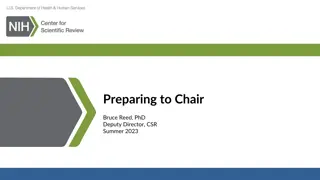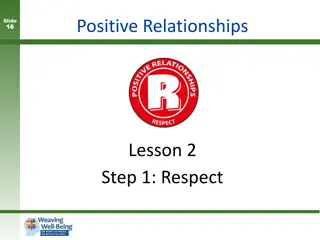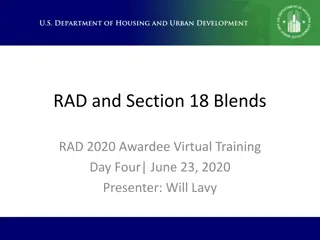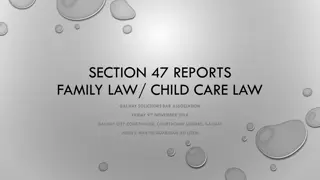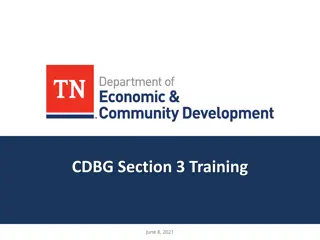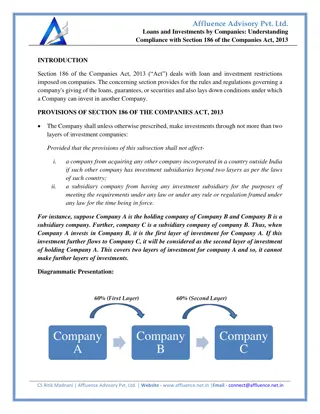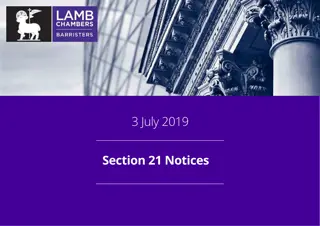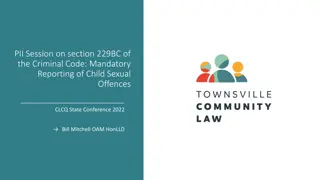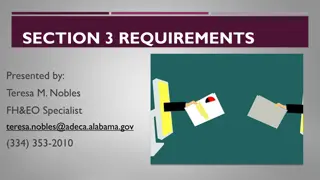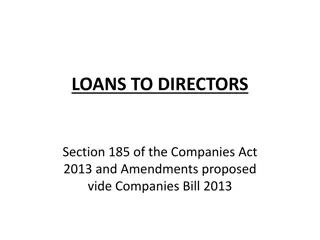Section 2: Understanding Myself and Others
Explore the nuances of passive, aggressive, and assertive communication styles. Learn how to express your feelings effectively, use verbal and nonverbal communication skills, and enhance your overall communication abilities. Engage in interactive activities to improve your communication techniques and understanding of body language.
Download Presentation

Please find below an Image/Link to download the presentation.
The content on the website is provided AS IS for your information and personal use only. It may not be sold, licensed, or shared on other websites without obtaining consent from the author.If you encounter any issues during the download, it is possible that the publisher has removed the file from their server.
You are allowed to download the files provided on this website for personal or commercial use, subject to the condition that they are used lawfully. All files are the property of their respective owners.
The content on the website is provided AS IS for your information and personal use only. It may not be sold, licensed, or shared on other websites without obtaining consent from the author.
E N D
Presentation Transcript
Section 2: Understanding Myself and Others Lessons 9 17
Lesson 9 Communication
Keywords Passive communication means accepting what happens without actively responding or expressing what you feel. Aggressive communication means communicating forcefully or angrily. Assertive communication means communicating clearly and respectfully.
At the end of this lesson, you will: 1. Express your feelings with greater awareness. 2. Explain how we express ourselves verbally and nonverbally. 3. Use your skills for communicating effectively with others.
Effective Verbal Communication, page 48 Make eye contact. Listen. Write things down (to prepare what you are going to say if you are nervous). Use assertive body language.
Body Language, page 48 Describe the body language seen in the picture.
Expressing How You Feel Here are some general tips on how to share your feelings with other people.
Practise your communication skills by playing a game of charades Think of a movie, book, TV programme, band or singer. Act it out for the class without speaking.
Communication Activity Blindfold one person (preferably outside on a pitch or large open area). In groups, demonstrate effective communication skills, by giving directions to the blindfolded person to guide them to a specific location.
Additional Resource: Communicate Assertively Video explaining three types of communication in simple language: Communicate Assertively (YouTube)
Lesson 10 Inclusive Communication
At the end of this lesson, you will: 1. Communicate more effectively with people who have physical or sensory conditions or needs. 2. Explain how communication can differ across cultures. 3. Use your improved skills for communicating with others.
Keywords Culture means the ideas, customs and behaviours of a particular group of people. Sensory condition refers to a disorder that affects how your brain processes the things you see, hear, taste or touch.
General Tips for Communicating With a Person With a Disability, page 51 Speak to a person with a disability as you would speak to anyone else. Speak directly to the person with the disability, not the carer. Respect their personal space. Try to speak to them at eye level.
Class Activity How accessible is your school for blind people or people in wheelchairs? Design a class activity to assess how accessible your school is, and present your findings. Find out more about communicating with blind or visually impaired people at www.visionfoundation.org.uk. Find out more about making places more accessible for wheelchair use at www.iwa.ie.
Additional Resource: Strengths and Skills of Autistic Students Tips for growing up on the autism spectrum: Strengths and Skills of Autistic Students: Teenage Resource (middletownautism.com)
Lesson 11 Self-Esteem
At the end of this lesson, you will: 1. Demonstrate skills for improving your self-esteem. 2. Explain what makes you different and unique.
Keywords Self-esteem is how you view and value yourself. Being unique means being one of a kind.
Building Self-Esteem, page 56 Accept that there are some things that you cannot change about yourself. Social media: Unfollow people who make you feel bad about yourself. Exercise: Being fit helps you to feel better about yourself. Respect yourself: Treat yourself like you would treat a good friend. Understand that you are unique and be proud of what makes you different.
Self-Esteem Find more information for 11- to 18-year-olds about confidence and self-esteem here. A blue text with a black background Description automatically generated
Class Discussion Social Media and Self-Esteem Do you think that people have more or less self-esteem issues because of social media? Discuss ways that social media can have a negative effect on self-esteem. Discuss ways in which social media can have a positive effect on self-esteem.
Additional Resource: Why I Don t Like the Way I Look A video on body image: Why Don't I Like The Way I Look? (YouTube)
Lesson 12 Respecting Myself and Others
At the end of this lesson, you will: 1. Explain your rights and the rights of others. 2. Recognise the importance of respecting other people and yourself.
Keywords Non-discrimination is fair treatment of all people. Respectmeans to have regard for someone s feelings, wishes and rights. A right is something that you are entitled to.
Respecting Yourself, page 62 You can show your respect for yourself by: Knowing your personal values Not smoking/vaping or using drugs or alcohol Eating a balanced diet Keeping fit Getting enough sleep Treating any illness you might have Standing up for yourself and being assertive Maintaining good personal hygiene and good grooming Thinking positively about yourself Not embarrassing yourself by doing something you may regret later
Respecting Others, page 63 You can show your respect for others by: Being inclusive Listening to them and showing an interest Respecting their culture and religion Being kind Not making fun of their feelings or opinions Letting them have their privacy Not making them do things they don t want to do Not making them feel bad
Class Discussion Being different: Why are some people so worried about being different? Do you think a fear of being different is more common in children, teenagers or adults? Why?
Additional Resource: Show Racism the Red Card Education resource with lessons, activities and worksheets: Secondary School Education Pack (theredcard.ie)
Lesson 13 Being Inclusive
At the end of this lesson, you will: 1. Appreciate the importance of inclusive behaviour. 2. Define discrimination and know how to create an environment free from discrimination. 3. Appreciate other people for their uniqueness.
Keywords Discrimination means treating a person or a group of people unfairly because of a certain characteristic such as their race or ability or gender. Stereotyping means thinking that all people who belong to a certain group are the same and labelling them. An example of a stereotype is that all young people who wear hoodies are thugs. Racism is the belief that characteristics (usually physical) make certain groups superior or inferior to others. An ally is someone who supports the cause of someone else or a group of people.
Examples of racism, page 67 Verbal or physical attacks Denial of access to public places/shops/pubs and accommodation Unwelcoming/unfriendly attitudes People wearing offensive badges, emblems or tattoos Racist comments written or verbal Racist graffiti Racist jokes Suspicion Exclusion
Supporting Anti-Discrimination Campaigns, page 70 Prepare a resource to raise awareness in your school community about a specific anti-discrimination campaign. See campaigns on the websites below for ideas: A blue and white text on a black background Description automatically generated A logo for a company Description automatically generated A pink and white logo Description automatically generated Down Syndrome Ireland: www.downsyndrome.ie BeLonG To: www.belongto.org Immigrant Council of Ireland: www.immigrantcouncil.ie
Fighting Discrimination in Your School Community, page 70 1.Be informed: Find out more about different cultures in your class and the types of discrimination people in your school community may experience. 2. Listen: Don t assume you know how a person feels. Ask them and listen to their answers. 3.Speak up: If you think something is wrong, say so. 4. Stand up and be an ally: Take part in campaigns, sign petitions and raise awareness.
Additional Resource: Gender Stereotyping A short video on how boys and girls can be stereotyped: Gender Stereotypes (B4UDecide)
Lesson 14 Changes During Adolescence
At the end of this lesson, you will: 1. Describe the physical, social, emotional and mental changes that take place during adolescence. 2. Explain the difference between sexual orientation and gender identity. 3. Ask the right people for help if you are having problems.
Keywords Puberty is a time during adolescence when the body changes and develops. Adolescence is the phase during which a young person develops from a child into an adult. Sexual orientation describes who we are attracted to and how we feel about other people. Gender identity refers to whether someone feels male or female or something else. It describes how you feel inside, not how you might look on the outside.
Available on Physical Changes During Puberty, page 74 Watch the video animations that explain the physical changes that happen to boys and girls during puberty.
Answers for Class Discussion, page 75 Underarm hair prevents skin-to-skin contact when doing certain activities, such as running and walking. It draws sweat or perspiration away from the skin. Girls hips widen because the pelvis bones grow and widen in order for them to be able to bear a child. This starts during puberty and can continue until the twenties. Boys shoulders grow broader as the rib cage expands. The rib cage expands to allow them to inhale more air, to supply muscles with oxygen. This happens due to increased testosterone production and continues up to the age of 20.
Range of Gender Identities, page 76 Watch the video called Range of Gender Identities and answer the questions in your book on page 76.
Additional Resource: Understanding Gender Identity A short animation explaining gender identity: Understanding gender identity (YouTube)
Lesson 15 The Male Reproductive System
At the end of this lesson, you will: 1. Identify the main parts of the male reproductive system. 2. Be aware of body image and issues associated with it. 3. Recognise the signs and symptoms of testicular or scrotal conditions.
Keywords Bodyimage is how you see yourself, how you feel about the way you look, and how you think others see you. Testicular or scrotal condition is an illness that develops in the testicles or scrotum. Its most common symptoms include pain and swelling in the testicles or scrotum.
Available on The Male Reproductive System, page 81 Watch the video about the male reproductive system.
